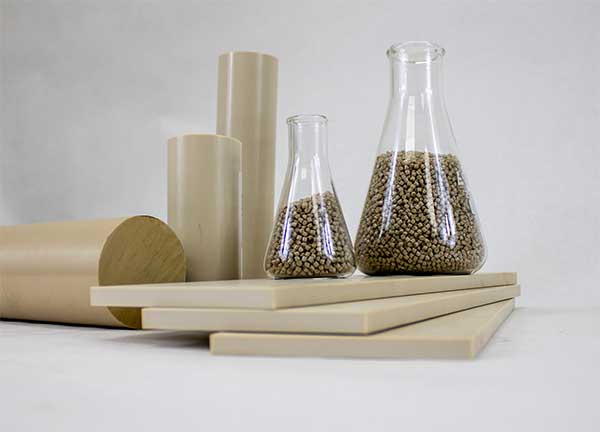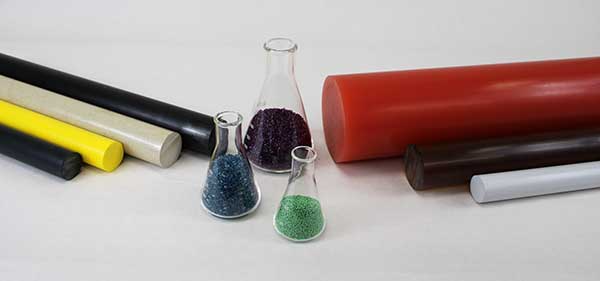Medical Device Manufacturers have dozens of different families of medical polymers to choose from when designing a product. Making it more complex is the fact that there are usually several grades or formulations within each polymer family. The challenge is how to zero in on the right medical plastic and grade for each application.
Once MDMs target a device’s performance and cost requirements for a new product, an assessment of the following factors related to different medical plastics can help narrow the list to few viable options, which can then be converted into prototypes and tested for validation:
Performance requirements:
- Biocompatibility
- Compatibility with sterilization methods
- Tolerance to repeated sterilization for re-useable devices
- Mechanical properties
- Thermal properties
- Optical properties
- Chemical resistance
Aesthetics, supply chain and cost considerations:
- Surface appearance, colors
- Processing options for device production
- Ready availability of stock shapes for machining if prototypes are needed
- Ready availability of resins for injection molding
- Material and processing costs
What are the Significant Performance Differences in Medical Grade Plastics?
There are more than a dozen families of medical thermoplastics, and those polymer families comprise hundreds of grades, each with somewhat different physical properties, processing characteristics, or both. MDMs, medical polymer suppliers, and the polymer converters who produce the production parts each bring expertise about different aspects of a product development project to the table. Working together, they can efficiently identify the medical polymer and production process that provide the best combination of performance and cost-effectiveness. A short list of material candidates can be developed based on these criteria:
- Biocompatibility – While this may seem to be the obvious starting point, it is important to verify that the specific grade of plastic meets required biocompatibility standards relative to the device’s time of exposure to bodily fluids and tissue. To facilitate this, resin suppliers typically provide certifications to verify biocompatibility compliance of specific grades of their plastics on request.
Some medical polymers meet biocompatibility requirements for short-term contact with patients. They are usually approved for contact for up to 24 hours. Others carry certifications for medium-term contact with bodily fluids and tissue, for a period of up to 29 days. At the upper end of medical plastics spectrum are specialized grades of high-performance thermoplastics, most notably PEEK, PPSU and polysulfone, that have been developed as materials for devices that implanted for prolonged periods, or permanently. - Sterilization tolerance – A key consideration for devices that are intended for repeated use, sterilizability can determine the useful life of a product or device. Some high-performance medical plastics can withstand hundreds of sterilization cycles. Radel PPSU, for example, has shown that it can retain its physical properties after 1,000 autoclave cycles. Other materials may be less tolerant to steam sterilization but can be sterilized repeatedly in ethylene oxide (EtO) gas and gamma radiation. The important consideration is the planned longevity of the device, and its ability to withstand the intended sterilization method for the required number of cycles.
-

PEEK ranks in the top tier of high performance medical plastics. Implantable and general medical grades are available in pellet form for injection molding, and as extruded shapes for machined components. Mechanical properties – The variety of medical polymers provides a range of performance levels on tensile strength and flexural modulus or stiffness. These can be important properties for simple applications like instrument handles, for more structural devices like prostheses, and for certain long-term implanted applications. Implantable PEEK, for example, offers flexural strength and modulus that simulate the properties of cortical bone.
Impact strength can also be an important consideration in choosing a material, especially if the application undergoes physical stress that might cause a brittle material to break or crack. In addition, some polymers with a high initial impact strength may exhibit a significant drop-off in ductility after repeated sterilization. Therefore, it is important to determine a medical grade plastic’s impact resistance after numerous cycles if long-term toughness is an important factor. Resin suppliers and injection molders and stock shapes extruders experienced in medical grade plastics can provide the data. - Thermal properties – Several high-performance medical polymers are recognized for their resistance to deformation and distortion even under high physical loads at elevated temperatures. Among them are PEEK, Radel PPSU and polysulfone as well as the implantable grade of each. These materials easily hold their dimensions during autoclaving at 134oC. They can also be used in components of heat-generating devices and equipment.
- Optical properties, colors – Certain medical polymers are available in both transparent and opaque versions, each with a distinct tint in its natural form. Polycarbonate and acrylic, for example, are almost water-clear, while polysulfone, Radel and Ultem have a transparent amber or yellow tint. These transparent medical plastics are also available in a variety of custom tints and opaque colors. Other polymers such as PEEK are naturally opaque and can be custom colored if desired.
Typical applications for transparent medical plastics are devices where it is important to monitor the level and flow of fluids. Because polymers such as polysulfone, Radel and Ultem also withstand common sterilization methods, they are frequently specified for multi-use transparent devices.
The availability of custom colors provides both aesthetic and a functional benefits. MDMs can specify a “corporate” color for their devices to reinforce brand identity. Designers also use various colors to differentiate devices such as instruments and sizers in surgical kits for quick and accurate identification during a procedure. - Chemical resistance – Medical devices are exposed to numerous chemicals, including disinfectants, cleaners, alcohols, and liquid pharmaceuticals. PEEK, Radel PPSU, polysulfone and Ultem are noted for their resistance to many of these chemicals. However, each plastic’s tolerance to a specific chemical often depends on the temperature and physical load or stress on the device, and the concentration of the chemical solution.
Some plastics are fully impervious to certain classes of chemicals, regardless of in-use conditions. Others can tolerate chemical exposure up to defined limits of exposure conditions to the different variables. Medical thermoplastic suppliers have extensive data banks regarding the chemical compatibility of their materials that is readily available. However, they also advise MDMs to test their devices under actual conditions to validate performance. The variations of in-use conditions are simply too numerous.
Other Factors To Consider When Evaluating Medical Polymers
Several factors can impact the cost of a device and disrupt or delay commercialization plans. These are some considerations to help ensure that targeted product costs, aesthetic requirements and commercialization schedules can be met:
- Production options and costs – Medical thermoplastics can be processed by injection molding, which affords economical high-volume production and finished parts with excellent dimensional tolerances and surface finishes. In some cases, post-machining an injection molded part provides complex features that molding alone cannot achieve.
Medical grade plastics can also be melt-extruded into stock shapes, which can then be precision-machined into prototypes or production parts. A capable shapes extruder will also have the versatility to produce rod and plate in sizes that efficiently correspond to the component’s configuration, to minimize material loss from machining.
A device’s geometry and the production quantities needed over the product life cycle will dictate which conversion method makes sense, and when. A medical plastics processor with capabilities in these different production methods can provide objective guidance in this area. -

Most medical polymers are available as extruded stock shapes for machined parts and prototypes, and in pelletized form for injection molding. Both forms typically offer a wide range of healthcare color options. Resin availability – In general, medical grade plastics are readily available either from the resin supplier, or more typically through authorized distributors. The advantage of distributors is that they purchase large quantities of materials and release them as needed with short lead-times. This eliminates the need for MDMs and their parts producers to carry excessive inventories.
The supply of specialized or newly developed materials may be more restricted. With such grades, working with an experienced injection molder and distributor can help manage delivery cycles and ensure reliable supply. - Availability of machinable stock shapes – Similarly, if MDMs require machined prototypes for design and/or material validation, or for production parts, it is important to verify that the candidate medical plastics are available in the form of machinable stock shapes.
- Material cost – A thermoplastic resin’s selling price or cost to the MDM typically aligns with its performance. This is because higher-performance plastics are usually more costly to polymerize. A good understanding of the properties required for a device can help define the optimum balance of cost and performance and preclude over-specification of properties that add cost but do not actually improve a device’s value to the MDMs’ customers.
- Aesthetics – The availability of custom colors in both opaque and transparent medical plastics allows MDMs to make their devices in colors that reflect their corporate identity. Colors can also be used functionally to differentiate devices easily, such as instruments in surgical procedure kits and joint replacement sizing trials.
Machining or etching the surface of injection molding tools can also impart logos, custom textures and patterns to finished parts.
Technical Resources That Help with Material Selection
In addition to their experience in device applications and materials, specialized medical plastics molders and extruders have excellent working relationships with resin suppliers. This can provide fast access to resources that can facilitate material selection and project development, including:
- Technical data sheets – Medical polymer converters maintain an electronic library of data on the medical plastics they convert. They can also access extensive historical data that resin suppliers have developed on the chemical resistance of their medical plastics.
- Laboratory testing – Medical plastic conversion specialists often have a material testing lab in-house, with equipment that conforms to standard industry test methods. This can be used to test under conditions beyond what standard data sheets provide.
- Materials and processing consultation – Specialists in medical plastics processing can offer extensive historical application experience in diverse materials. They also understand optimum production methods and can provide guidance on effectively transitioning from machining to injection molding when appropriate.
FDA’s Essential Resources
As a standard practice on material selection, MDMs will also research devices and related medical polymers through the FDA’s extensive data bases. Those resources, and an understanding of the factors outlined in this overview, can guide MDMs toward the choice of the medical grade plastic that achieves a device’s regulatory approvals, targeted functionality, long-term reliability and cost-effectiveness.
